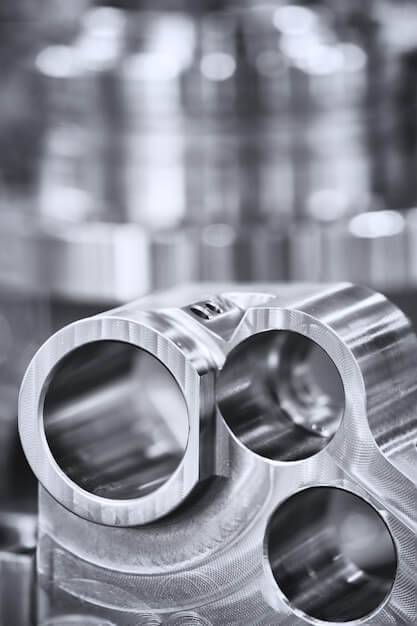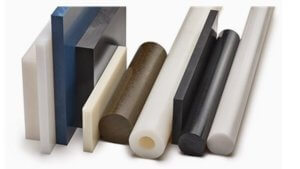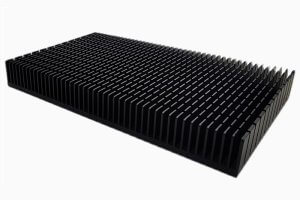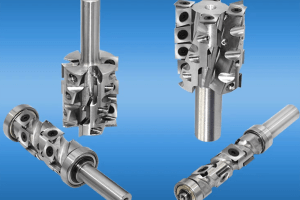Understanding Finishing Processes in CNC Machining
In the realm of CNC machining, finishing processes such as fillets (rounded edges) and chamfers (beveled edges) are essential techniques for enhancing the functionality and aesthetics of machined parts. The choice between a fillet and a chamfer is not merely cosmetic; it profoundly impacts the part’s performance, assembly, and stress distribution. Fillets, with their curved transitions, often increase the strength of a component by reducing stress concentrations, making them ideal for high-stress applications. Conversely, chamfers typically facilitate easier assembly, especially for components designed to fit together with tight clearances. Therefore, selecting the appropriate edge treatment is crucial, as it dictates the ease of manufacturing, assembly, and ultimately the longevity of the product.
Definition and Functionality of Fillets
In CNC machining, a fillet refers to the rounding off of an interior or exterior corner of a part. This technique is often utilized to enhance the strength and flow of a piece by reducing the stress concentration that sharp edges can cause. During the CNC process, a specialized tool called a ball end mill or a radius cutter creates the curved surfaces required for fillet geometry. The application of fillets in components used across various industries like aerospace and automotive serves not only to bolster longevity under cyclic loads but also aids in minimizing fatigue failure. For example, the smooth transition of a fillet on an aircraft’s wing spar can significantly distribute stress more evenly than a sharp edge.
The Process of Creating a Fillet in CNC Machining
Creating a fillet within a machined component involves programming the CNC machine with precise tool paths to allow the cutting instrument to sweep smoothly across the material’s surface at the correct angles. The machining operation typically requires tools with profiles matching the desired radius of the fillet, ensuring consistency and accuracy across the piece. The choice of tooling and path strategy directly impacts the finish quality and efficiency of the process, making it crucial for operators to plan effectively to optimize these aspects.
Applications and Benefits of Using Fillets
Fillets are integral design features because they inherently improve product performance and durability. Their rounded contours facilitate reduced stress concentrations, thus enabling parts to withstand higher loads and endure longer in their operational environment. Additionally, fillets contribute to aesthetic improvements and easier cleaning, which is particularly beneficial for medical equipment where hygiene is paramount. In jet engine blades, implementing fillets minimizes the chance of crack initiation due to vibration and thermal stresses, enhancing overall safety and function.
What Are Chamfers?
A chamfer in the realm of CNC machining refers to a beveled edge that connects two surfaces, typically designed to mitigate sharp corners for safety, aesthetics, or to facilitate assembly. It serves a crucial role when components require an angled transition between planes and eliminating stress concentrations on edges where a fillet would not suffice due to spatial constraints or functional requirements. The making of chamfers involves programming the CNC machine to create straight lines at predetermined angles, efficiently cutting away material with precision. In certain applications, such as where clearance is needed for mating parts or where ease of assembly is imperative, engineers might specify chamfers over their rounded counterpart, fillets, thus streamlining component design particularly in cases involving interlocking mechanical assemblies.
Comparing Fillets and Chamfers
In CNC machining, fillets and chamfers serve as transitions between two surfaces; yet they bring distinct physical characteristics and mechanical implications. A fillet is a rounded corner or the arc that connects two surfaces at an angle, typically intended to reduce stress concentration which can be pivotal in extending the life of a part under fatigue loading. Conversely, a chamfer refers to a straight-edged slant cut at a 45-degree (usually) to ease the edges of a workpiece, thus simplifying assembly with less risk for snagging on sharp corners and potentially reducing costs owing to easier setup and faster cutting times. Visually, fillets offer a smooth, curved appearance associated with high-end design aesthetics, whereas chamfers present a more defined, angular look, often perceived as modern and clean.
Stress Distribution Concerns in Design
In the realm of CNC machining, deciding whether to utilize fillets or chamfers is often guided by stress distribution considerations within a design. Fillets, which are rounded edges, can more effectively distribute stress across surfaces and are particularly advantageous in parts that will endure cyclic loads or high-stress conditions, mitigating the risk of stress concentration that could lead to material failure. Conversely, chamfers—beveled edges created at transition points between two faces—while easier to machine, do not disperse stresses as efficiently. A prime example would be an aerospace component where a fillet might be favored over a chamfer to ensure long-term durability under repeated flight vibrations and loading cycles.
Cost-Implications of Producing Fillets versus Chamfers
The decision between implementing fillets and chamfers can also have significant cost implications during CNC machining. Fillets require specialized tools such as ball end mills and may involve longer machining times due to the need for multiple passes and slower feeds to accurately create the curved profile, resulting in higher production costs. On the other hand, chamfers are typically quicker to machine using standard tools like chamfer mills, leading to reduced cycle times and overall cost savings. As a practical consideration, an automotive manufacturer might prefer chamfers on less critical parts to minimize costs without substantially compromising functionality.
Time Efficiency in Machining Both Types of Edges
Time efficiency is another critical factor when selecting between fillets and chamfers in CNC machining processes. Chamfers generally offer a more time-efficient edge-finishing option because they can be machined rapidly with simple linear movements, whereas fillets demand careful tool path calculations and gradual material removal to achieve the desired radius, taking up more programming and machining time. For instance, in mass-produced consumer electronics casings, opting for a chamfered edge over a filleted one can significantly expedite production while maintaining an acceptable level of product robustness.
Implementing Fillets and Chamfers in Design Software
In CAD programs, adding fillets and chamfers is a straightforward process that enhances the functionality and aesthetics of machined components. To implement these features, designers select the edges on their 3D model where they require smoothing or beveling and apply the corresponding function—fillet for rounded edges and chamfer for angled transitions. Accuracy is pivotal; therefore, it’s recommended to input precise radius or angle measurements directly into the program’s property fields rather than estimating visually. An example would be specifying a 5mm radius for a fillet on all external corners of a component to ensure uniform stress distribution. By keeping design intent clear and parameters consistent, errors during manufacturing are greatly reduced.
Fillet Application in Aerospace Component
In aerospace engineering, the integration of fillets into component designs is instrumental for stress reduction. A practical illustration involves the use of a fillet on an aircraft wing’s spar where it connects to the fuselage. In this critical juncture, the fillet serves to smooth out sharp internal corners that would otherwise be points of high-stress concentration. By virtue of its curved surface, a fillet distributes loads more evenly and mitigates potential cracking or fatigue issues. The precise curvature of these fillets is dictated by CNC machining capabilities which allow for accurate adherence to aerodynamic profiles essential for flight safety and performance.
Chamfer Application in Automotive Part
In automotive manufacturing, chamfers are routinely applied to improve assembly and reduce wear on moving parts. Take, for example, the chamfered edges of a gear wheel. These angled cuts not only facilitate easier insertion during vehicle transmission assembly but they also prevent the adverse effects of sharp-edge engagement under high-speed operation conditions. Chamfers here act to soften initial contacts between gears, easing them into engagement thus contributing to smoother power transmission and elongating the lifespan of the components. Advanced CNC techniques enable the precision crafting of these chamfers ensuring compatibility with tight tolerance requirements of automotive applications.
Understanding the Production Ease and Combination of Fillets and Chamfers
When considering the production ease between fillets and chamfers in the context of CNC machining, chamfers typically come out on top as the simpler feature to produce. This simplicity is because chamfers often require only a single linear pass with an angled cutting tool, whereas fillets necessitate more complex tool paths and sometimes specialized round-end or ball-nose cutters for smooth transitioning curves at internal or external corners. However, it’s not uncommon for both fillets and chamfers to coexist on a part, each serving its specific functional or aesthetic purpose: chamfers may be used to facilitate easier assembly or to reduce stress concentrations, while fillets can be integral in enhancing the flow of materials or fluids across interfaces. The decision whether to use a fillet or a chamfer hinges on the requirements dictated by the design specifics, material selection, functionality goals, and manufacturing considerations—the choice thus involves understanding the benefits and limitations of each edge treatment method in relation to the intended application.
Other Articles You Might Enjoy
- Difference Between CNC and Manual Machining
Humans do not like change. Some people were unwilling to let go of their slide rules after calculators were created. While CNC machining has been around for decades, some still…
- Exploring Bead Blasting in CNC Machining and Bronze Machining
Introduction Bead blasting and CNC machining are integral processes in modern manufacturing, each playing a crucial role in producing high-quality components. When combined, they offer unparalleled precision, surface finish, and…
- CNC Machining and the Quest for Lightweight Materials in the Aerospace Industry
Introduction to CNC Machining CNC Machining, standing for Computer Numerical Control Machining, is a manufacturing process where pre-programmed computer software dictates the movement of factory tools and machinery. This process…








